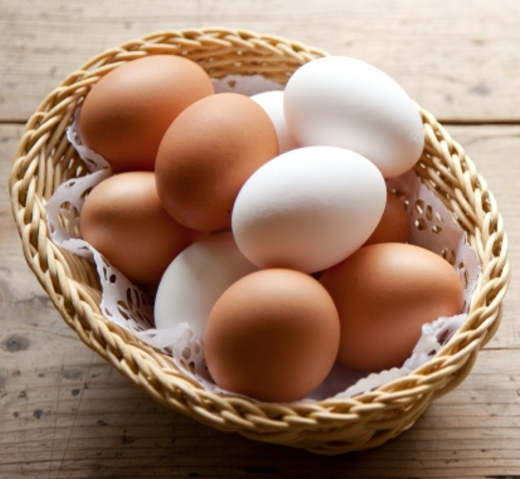Copyright © University of Cambridge. All rights reserved.
'Eggs in Baskets' printed from https://nrich.maths.org/
Show menu
Why do this problem?
This problem involves addition and subtraction, and requires children to work on three interdependent conditions simultaneously - the number of eggs must be ten, the brown basket has one more than the red basket and the pink basket three more than the red. Realising that changing the eggs in one basket affects the others takes a sophisticated bit of reasoning. The problem could be used to focus on children's mathematical representations and it is a good context in which to talk about using trial and improvement, combined with a systematic approach.
Possible approach
Mark Dawes from Comberton Village College created a powerpoint which follows the approach below, which you might find useful.
You could start off with pictures of three bags on the board and suggest that there are six sweets in total inside the bags. Using the spotlight tool on the interactive whiteboard (or simply by drawing in spots to represent sweets), reveal that the first bag contains two sweets and the second three. Invite pupils to say how many sweets the third bag contains and to explain how they know. You could then ask children to draw or write on their mini-whiteboards to show another way of putting six sweets into three bags. Some may draw pictures, others may write number sentences, for example. Share these different representations among the whole group and talk about the advantages of each.
You could then set up a new situation with three boxes drawn on the board and, for example, three apples in the first box. Tell the children that the second box has two more apples than the first box (you could have this written on the board to reveal) and discuss what that tells us about the number in the second box. Then say that the third box has two apples fewer than the first box and talk about this in a similar way. Ask learners to work together to find other numbers of apples that could go in each box. When you share their suggestions, draw attention to those children who used trial and improvement combined with some sort of system, for example by trying four apples in the first box, then five etc. They may also have tried smaller numbers of apples in the first box and it would be interesting to encouarge them to explain what happened.
You can then introduce the children to the problem as it stands - it might help to reveal the information a bit at a time. Give pairs plenty of time to work on it on mini-whiteboards or large sheets of A3 paper, using any representation they feel is helpful. You may also find having counters or some other objects to represent the eggs would be useful.
The plenary can be used to share different ways of working on the problem as well as the solution itself. You can discuss the advantages and disadvantages of each method, which will help children select appropriate methods on subsequent occasions.
Key questions
Possible extension
Once the children have solved this first question, give them the opportunity to make up one of their own. A writing frame such as this could be useful:
Most will realise after a short time that the easiest way is to start with eggs in the baskets, (i.e. the answer) and concoct the question from that. They could then offer it to a friend to see if they can work it out.
Possible support
Children may find a recording sheet helpful for them to record their thinking. In addition, providing vocabulary cards or sentence stems to support children making sentences to describe the number of eggs they have put into each basket could be useful. Alternatively, you could offer questions about just two baskets.
